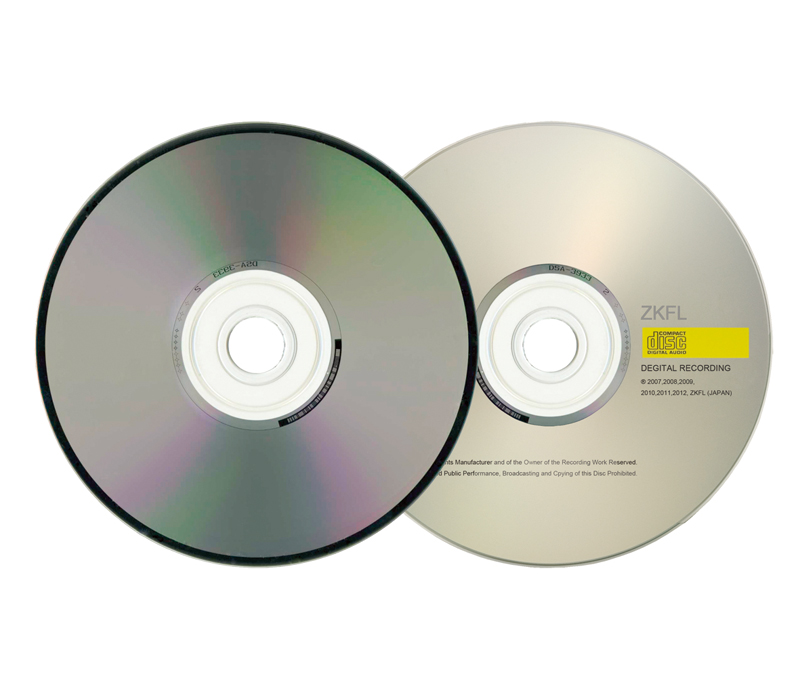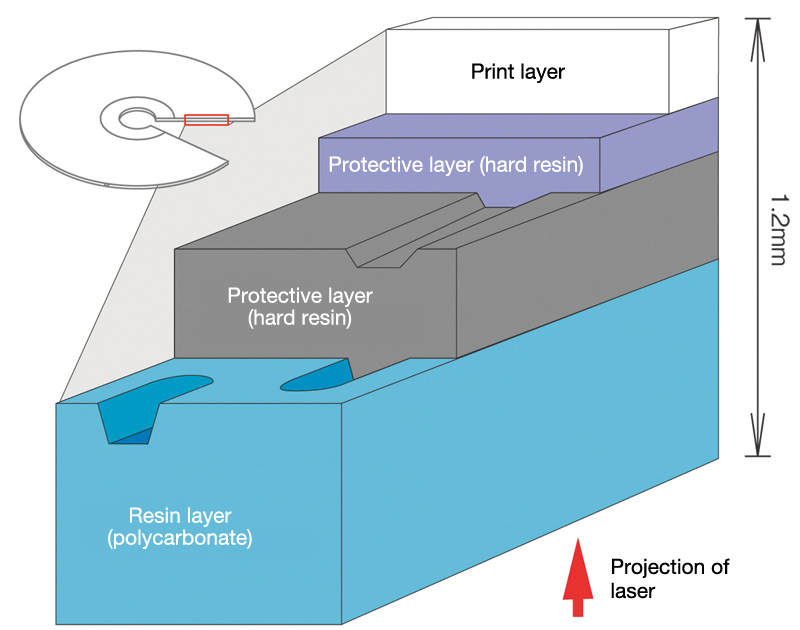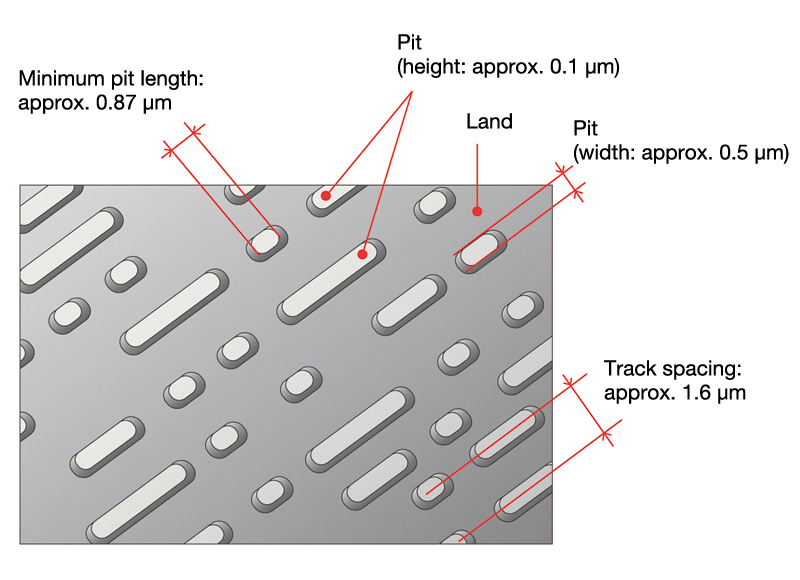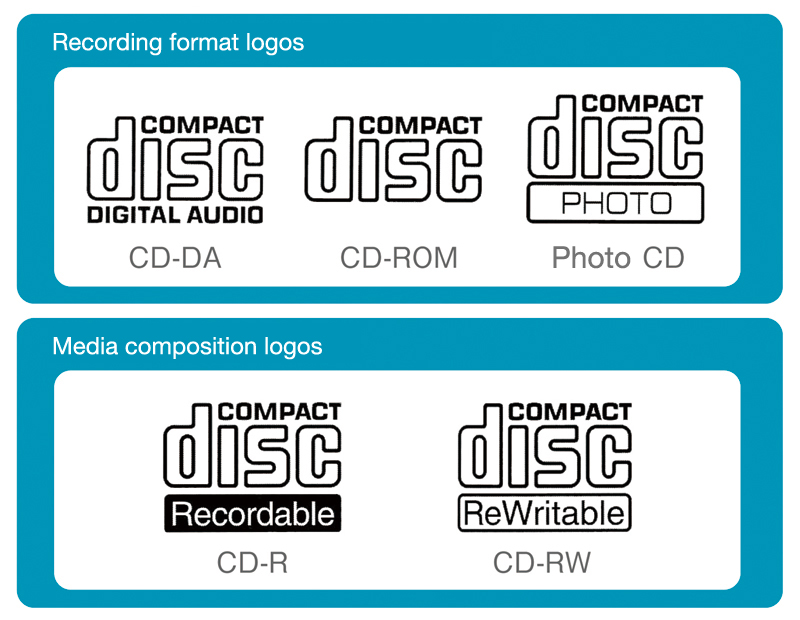CD
CD
CD
CATEGORIES
Generally, the term CD refers to a CD-DA (Compact Disc Digital Audio), but it is also a general term for an optical disc with a diameter of either 80mm or 120mm and a capacity of up to 700MB. CD-ROM, Photo CD, CD-R, and CD-RW are some of the logos and names that are used in relation to CDs. However, because these products with different media compositions and recording formats are treated in the same category, it is difficult for users to determine their suitability for various uses and objectives. This section provides a description of the recording principles and formats. For details regarding media composition, please refer to the appropriate sections for the respective media type.
A CD is a disc-shaped recording medium made of a polycarbonate resin base applied with a thin reflective metallic layer (usually aluminum) and a protective layer press-molded on top. Digital information is recorded on the metallic layer of the CD in tiny dents known as pits. When a laser is irradiated on to this reflective layer, the pit sections produce weaker reflections due to light interference. Data can thus be read by detecting the positions of the leading and trailing edges of the pit. The pits are encoded in a spiral track from the center of the disc to the outside edge and are scanned at a constant linear velocity (CLV). The rotation speed of the disc thus falls as the scanning unit approaches the outer sections of the disc. In uses other than for playing music, there are also drives that can be switched to the constant angular velocity (CAV) mode in the same way as media using magnetic recording methods. Although there are no differences in media composition and manufacturing processes between a CD-DA used for recording music and a CD-ROM used for recording data, differences exist in recording formats. Especially with respect to error detection and correction, the former uses CIRC (Cross-Interleaved Reed-Solomon Code) whereas the latter also uses EDC (Error Detection Code) and ECC (Error Correction Code) for enhanced error correction capacity. File systems that can be used on a CD-ROM include ISO9660, ISO9660 Joliet Extensions/Romeo Extensions, HFS (Hierarchical File System), HFS+, etc. (HFS and HFS+ are designed for the Mac OS and cannot be used in other environments but when they take a hybrid configuration of HFS+ and ISO9660 Level 1, the ISO9660 part becomes compatible.) The designation “XX-speed” attached to drive units and optical recording media is based on the assumption that the data transfer rate when playing a CD-DA is single speed.
RELATED PAGES

 The structure of a CD
The structure of a CD CD recording surface
CD recording surface CD logos and symbols
CD logos and symbols
